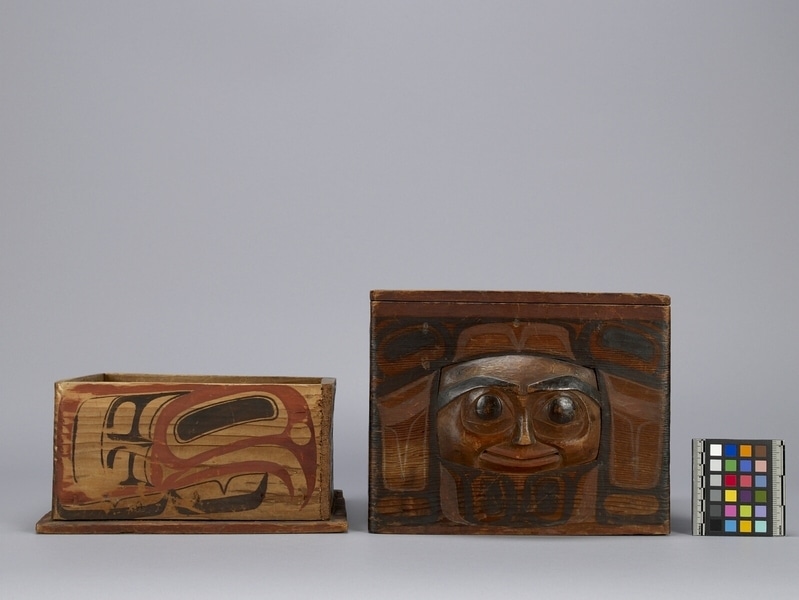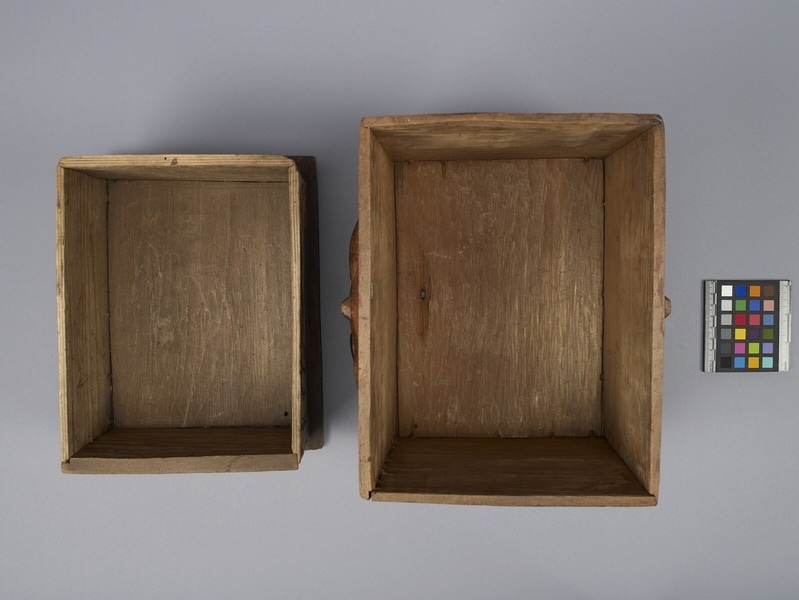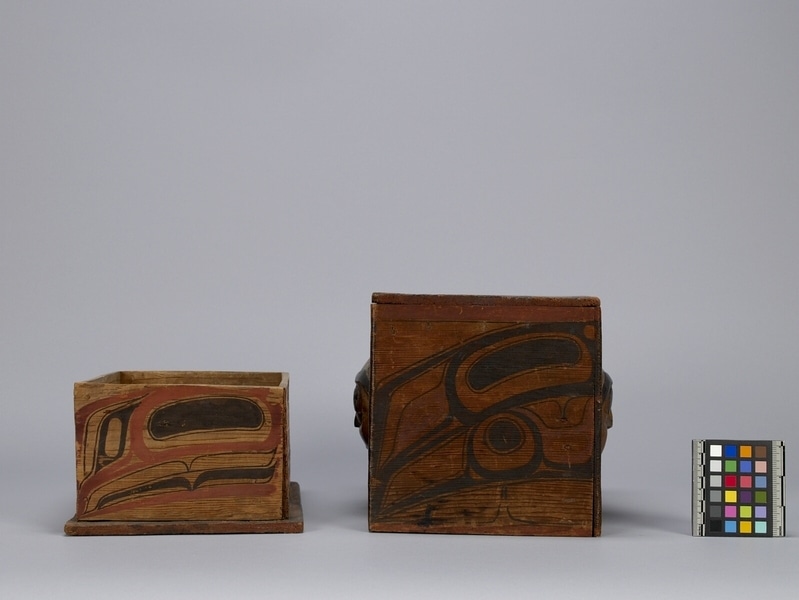Bentwood Box Item Number: 1182/1 a-b from the MOA: University of British Columbia






Description
A rectangular wood box on a flat base with a lid (part a) that fits on top. The sides of the box and lid are painted with red and black stylized creatures. There are two carved faces on the either sides of the lid with black eyes and eyebrows and a red mouth. The base, top, and sides of the box are made of red cedar; the faces are carved of alder and inset into the cedar, held in place with small wooden dowels. While there may be commercial paints used on the outside, the inner part is painted with a mineral-based paint made of red ochre.
History Of Use
The specific uses of bentwood boxes varied among the peoples of the Northwest Coast, as did the styles and intricacies of manufacture. While everyday utility boxes were manufactured by family members as the need arose, greater skill and artistry were required to make the carved and painted boxes that were used as trade goods or as storage containers for precious items. Such containers not only stored the materials that signified rank and prestige, but could themselves be valuable possessions and symbols of a lineage; many were considered treasures and were passed on for generations. A specialized type of box, like this one, was constructed with a telescoping lid made to fit completely over the sides of the box inside. Telescoping boxes and chests appear to have been most common in the eighteenth and nineteenth centuries. As double-walled containers, they would secure the contents from rodents or other intrusions, and in some cases, offer people special protection of powerful items inside.
Iconographic Meaning
In an unusual display of emotion for Northwest Coast art, this guh-yoh-jeelth has one face smiling while the other seems bad-tempered. There are similarities between these faces and those on other Haisla zux’um figures. [Lyle Wilson, 2019]
Specific Techniques
This box-within-a-box consists of two separate boxes, each steam-bent from a single plank, with one designed to fit over and enclose the other. Double boxes are rare, especially small ones. Most of the surviving examples are carved and painted in a more archaic style, and they likely preceded the less labour-intensive, single bentwood boxes that have a heavy, removable lid designed to sit on top.
Item History
- Made in British Columbia, Canada during 1870
- Owned by Walter Banko before January 15, 1987
- Received from Walter Banko (Seller), Museum of Anthropology Shop Volunteers (Funding source) and Canadian Cultural Property Export Review Board (Funding source) on January 15, 1987
What
- Name
- Bentwood Box
- Identification Number
- 1182/1 a-b
- Type of Item
- box
- Material
- red cedar wood, paint and alder wood
- Overall
- height 22.1 cm, width 26.0 cm, depth 25.0 cm
- Part A
- height 20.6 cm, width 25.6 cm, depth 25.0 cm
- Part B
- height 12.4 cm, width 26.0 cm, depth 19.6 cm
Who
- Culture
- Haisla
- Previous Owner
- Walter Banko
- Received from
- Walter Banko (Seller), Museum of Anthropology Shop Volunteers (Funding source) and Canadian Cultural Property Export Review Board (Funding source)
Where
- Holding Institution
- MOA: University of British Columbia
- Made in
- British Columbia, Canada
When
- Creation Date
- during 1870
- Ownership Date
- before January 15, 1987
- Acquisition Date
- on January 15, 1987
Other
- Condition
- fair
- Current Location
- Case 21
- Accession Number
- 1182/0001 a-b